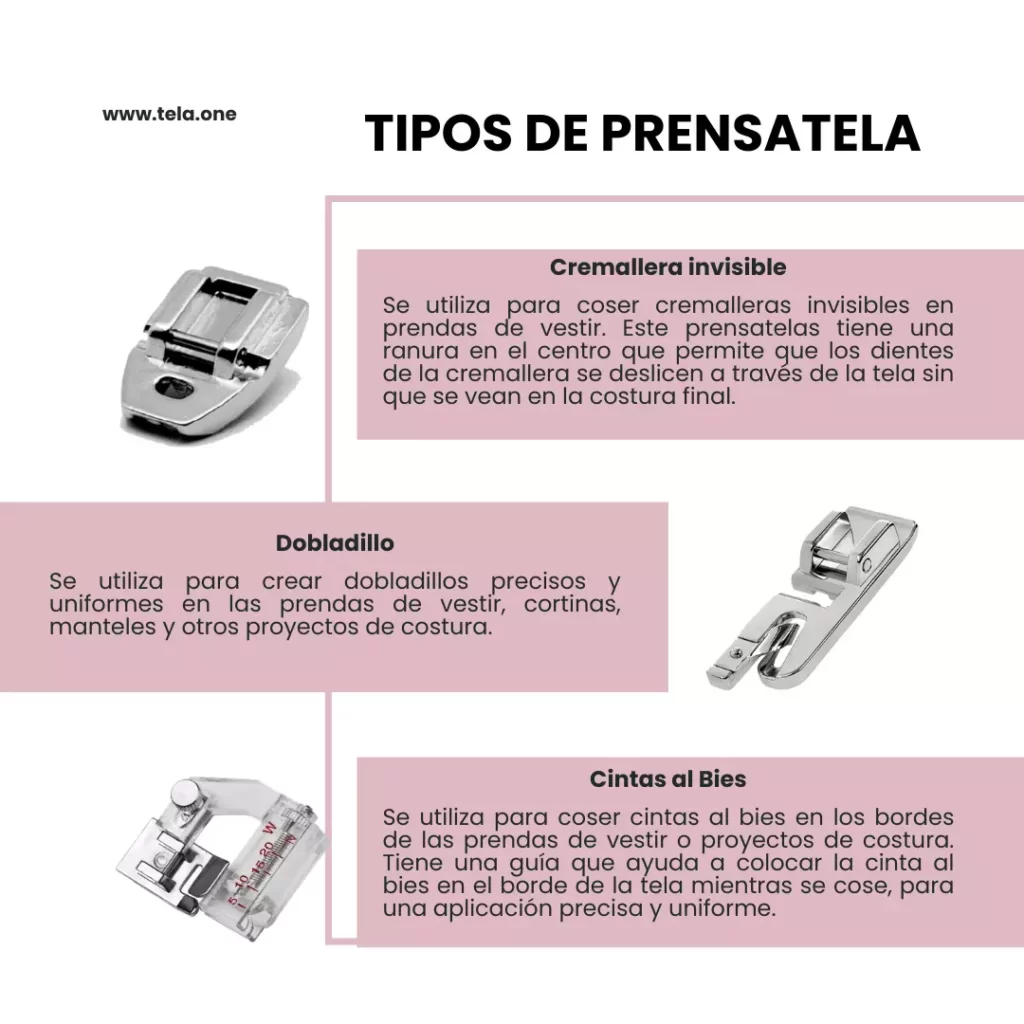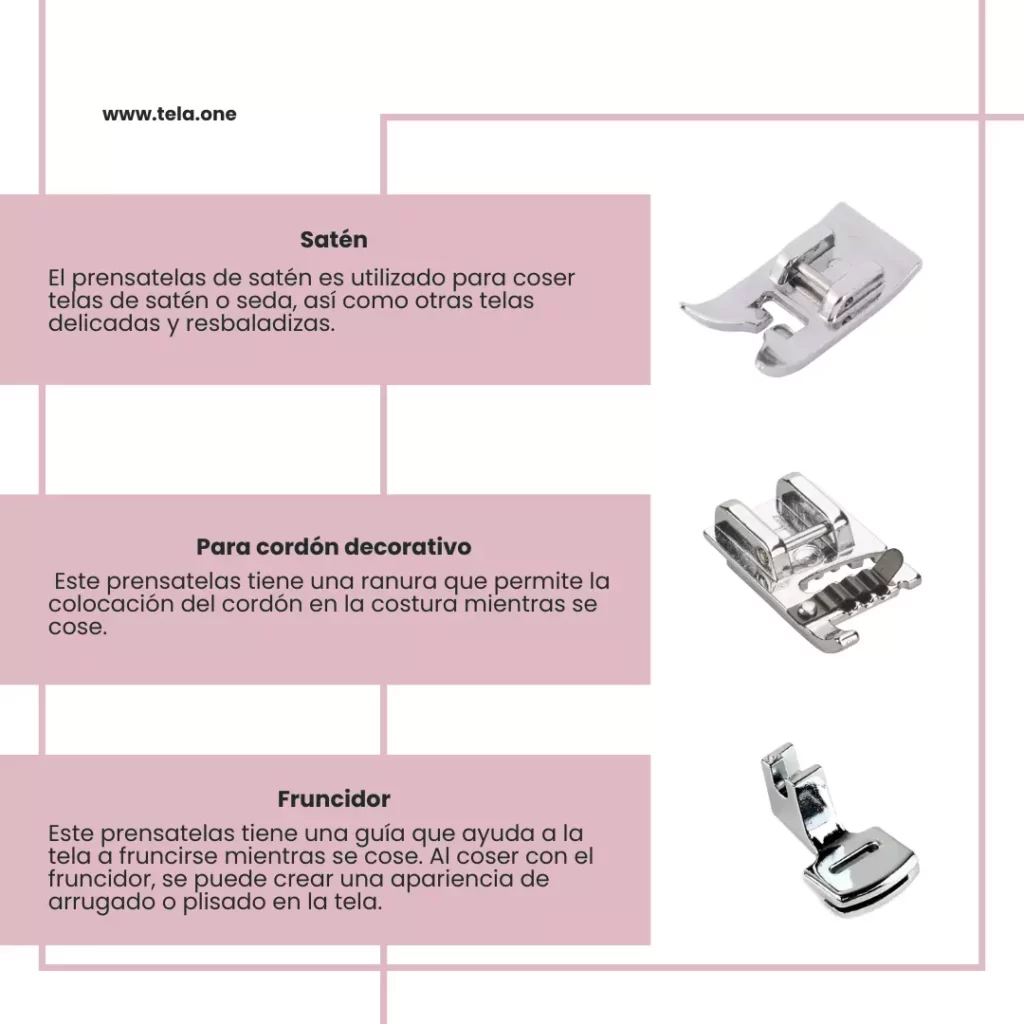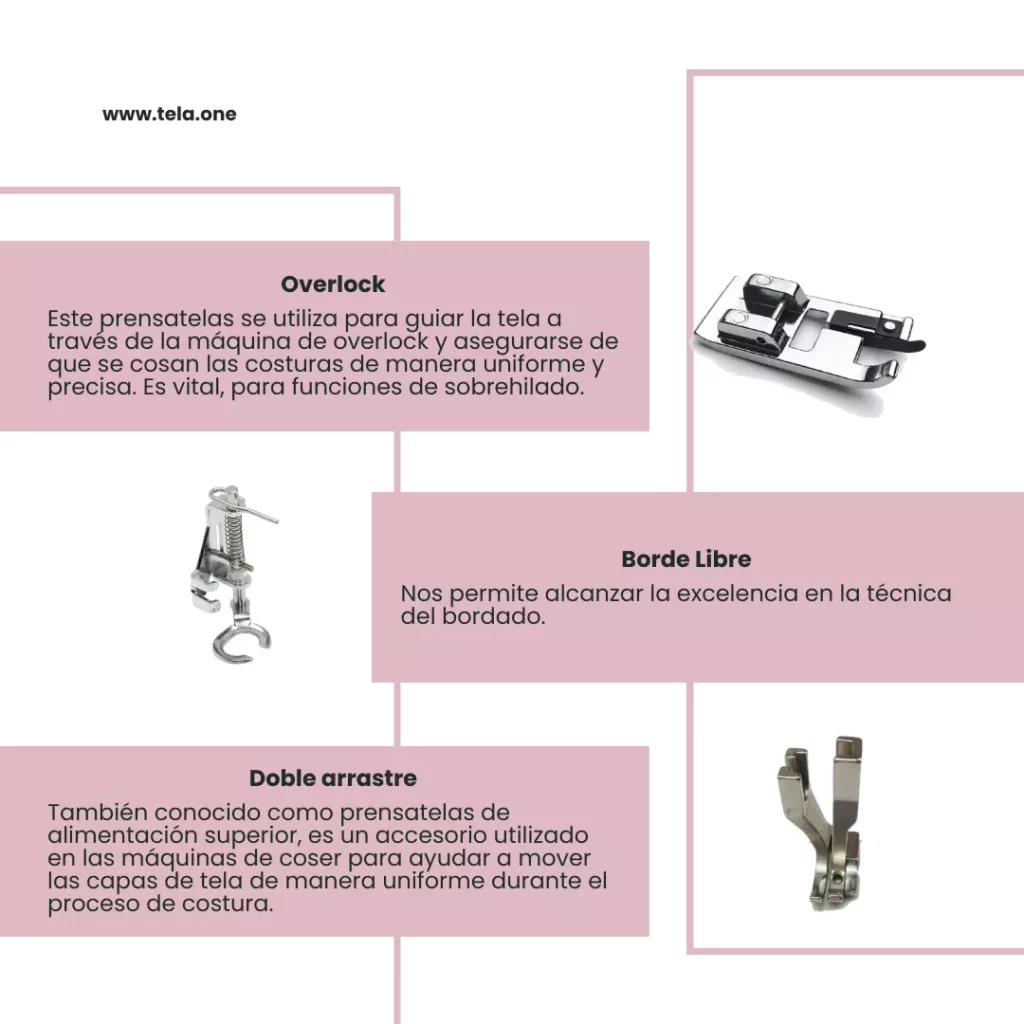If you want to know about sewing, you should know that presser feet are an essential part of any sewing machine. But do you know all the types of presser feet that exist and when they are used? In this article, you will learn about the different types and how you can use each one to improve your sewing projects.
Before we begin, it is important to understand what a presser foot is. In short, it is the piece that is responsible for holding the fabric while it is sewn. Each type has a precise form and function, allowing you to perform different types of sewing.

TYPES OF PRESSER FEET
Double feed presser foot
Also known as top drag. It is a special type used for sewing thick or difficult to handle fabrics, such as leather, vinyl, canvas, knits and other heavy materials.
It works by adding a second set of teeth to the top of the piece. Which helps move the fabric evenly through the sewing machine. This ensures that the fabric moves evenly and that the layers of fabric stay still while being sewn.
Overlock Presser Foot
The overlock foot is used on overlock or serger machines. This piece is essential to perform quality overcasting or overlocking on fabrics.
The overlock machine uses several threads to sew and cut the fabric at the same time. It is an essential part of the machine as it helps keep the fabric in place while sewing and cutting.
Gathering presser foot
It is used to create gathers in fabric. It has a guide that allows you to adjust the amount of gathering you want to create.
Straight stitch foot
As the name suggests, it is used to sew straight stitches. This part comes standard with sewing machines and is used to sew medium and heavy weight fabrics. If you are going to sew a seam with a straight stitch, this is the one you need.

Zigzag presser foot
It is one of the most common. As the name suggests, it is used to sew zigzag stitches. It is ideal for stretch fabrics and is used to bind medium and light weight fabrics. If you need to sew a seam with an elastic finish, such as reinforcement in a knitted garment, it is the one to use.
Zipper foot
There are two types of zipper feet: one for invisible zippers and one for regular zippers. The one dedicated for invisible zippers has a small space in the center that allows the zipper to be sewn without the seam being visible.
Buttonhole foot
It is one of the most useful pieces you will have. As the name suggests, it is used to sew buttonholes. There are different types that fit different sizes of buttonholes.
Button presser foot
This piece is ideal for sewing buttons, although it is a little complicated to use, it is very useful. It can come in different sizes, to adapt to each design. It is very good for cotton, silk or linen fabrics.

Hem foot
Used for hemming light and medium fabrics. This piece has a guide that allows you to fold the fabric while it is sewn.
Quilting presser foot
It is widely used for thick and quilted fabrics. This piece has a guide that allows you to sew several layers of fabric without them moving. If you need to sew a quilt or any project that requires several layers of thick fabric, this type is the one to go for.
Piping presser foot
It is used to sew piping or cord into fabric. This presser foot has a channel that allows you to guide the ribbing while sewing.

DO PRESSER FEET WORK FOR ALL TYPES OF FABRICS AND FABRICS?
Although presser feet are very useful tools in sewing, not all of them are suitable for everything in garment construction. It is important to select the most suitable one for the type of fabric to be sewn. Since this can affect the quality of the sewing and the final finish of the project.
For example, the straight stitch foot is ideal for medium and heavy weight fabrics. But it is not the best for light or stretchy fabrics as it can leave marks on the fabric. If you are sewing a lightweight or stretch fabric, it is best to use a zigzag or stretch fabric presser foot.
Similarly, the quilting foot is ideal for thick, quilted clothing items. But it is not the best for lightweight fabrics as it can cause the fabric to wrinkle or move during sewing.
As you can see, there are many different types of presser feet, each designed for a different task. If you are new to sewing, you may not need all of these pieces. However, as you gain more experience, you may want to explore different types to improve your sewing habits.
Remember that each sewing machine may have some presser feet. Therefore, it is important that you consult the user manual of your machine to know which ones are available and how they are used. Also, it is always better to practice before applying it to a project.
Now that you know the different types of presser feet, it’s time to get to work and explore everything that sewing has to offer.
